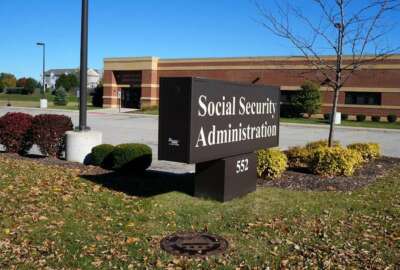Location, location, location: Your next office
Are you ready to return to the office? What are your options? With tens of thousands of people eligible to retire, and labor shortages outside government, some ...
So where will you working this time next year? Maybe starting in March, which is now!
If you’ve been doing your job from home or a remote worksite, the thought of returning to work, spending hours in traffic and then finding a parking space may be the stuff of nightmares. But as pandemic rules are relaxed, and things hopefully get (and stay) better, some changes are in the wind. Maybe for hundreds of thousands of feds who’ve been teleworking and loving it. And according to many, working from home has made them more productive, with many saying they are putting in extra time to get the job done.
At the start of the pandemic, about 3% of all federal employees were working from home. And that number had started to decline as the Trump administration either eliminated or reduced the number of teleworkers, and the number of days per month they could work away from their traditional office. Currently about 60% of the non-postal federal workforce is teleworking anywhere from two to five days per week. Before the COVID-triggered change, some agencies were limiting teleworking to one or two days per month in order to satisfy the congressional push toward teleworking. They could check the how-many-employees-are-teleworking box to keep members of Congress, primarily House Democrats, off their backs.
But all that could change, and many executives who must make stay-home or back-to-the-office decisions are watching the Internal Revenue Service. The IRS, like Social Security, the Department of Veterans Affairs and the U.S. Postal Service have the highest levels of contact with the public.
Although home office or office-office decisions will vary by department and agency, the backlogged (and financially starved) IRS is under the gun to get better. Fast. And get all important tax refunds back on track. As part of that effort the IRS is focusing on its Taxpayer Protection Program, primarily but not exclusively at its Austin, Texas, Ogden, Utah, and Kansas City campuses.
That important operation — with thousands of employees — will begin this month. “The approximate timeframe is March 28, 2022 through September 30, 2022. Employees will be given 30-days notice to report” back to the office, according to an internal IRS document. Although absolute numbers are hard to come by, Taxpayer Assistance Centers (walk-in offices) have been staffed for more than a year. The first surge (reassignment of those from others jobs to work in phones or paper inventory) started yesterday. And could involve as many as 1,200 people. The second back-to-the-office drive involving workers from campuses will likely involve about 800.
So are you ready to return to the office? What are your options? With tens of thousands of people eligible to retire, and labor shortages outside government, some people are expected to take a hike rather than go back to the way things were.
Nearly Useless Factoid
There are more than 1,400 species of bats in the world, which account for around 20% of all mammal species in the world.
Source: Bat Conservation Trust
Copyright © 2024 Federal News Network. All rights reserved. This website is not intended for users located within the European Economic Area.
Mike Causey is senior correspondent for Federal News Network and writes his daily Federal Report column on federal employees’ pay, benefits and retirement.
Follow @mcauseyWFED





